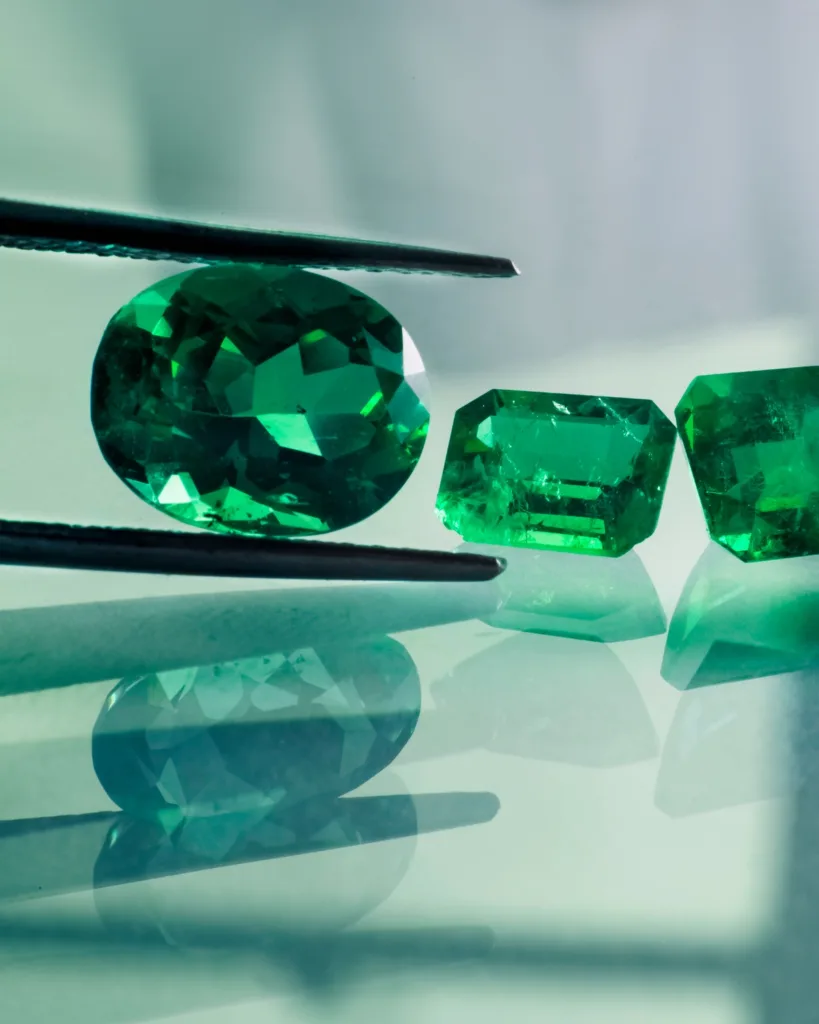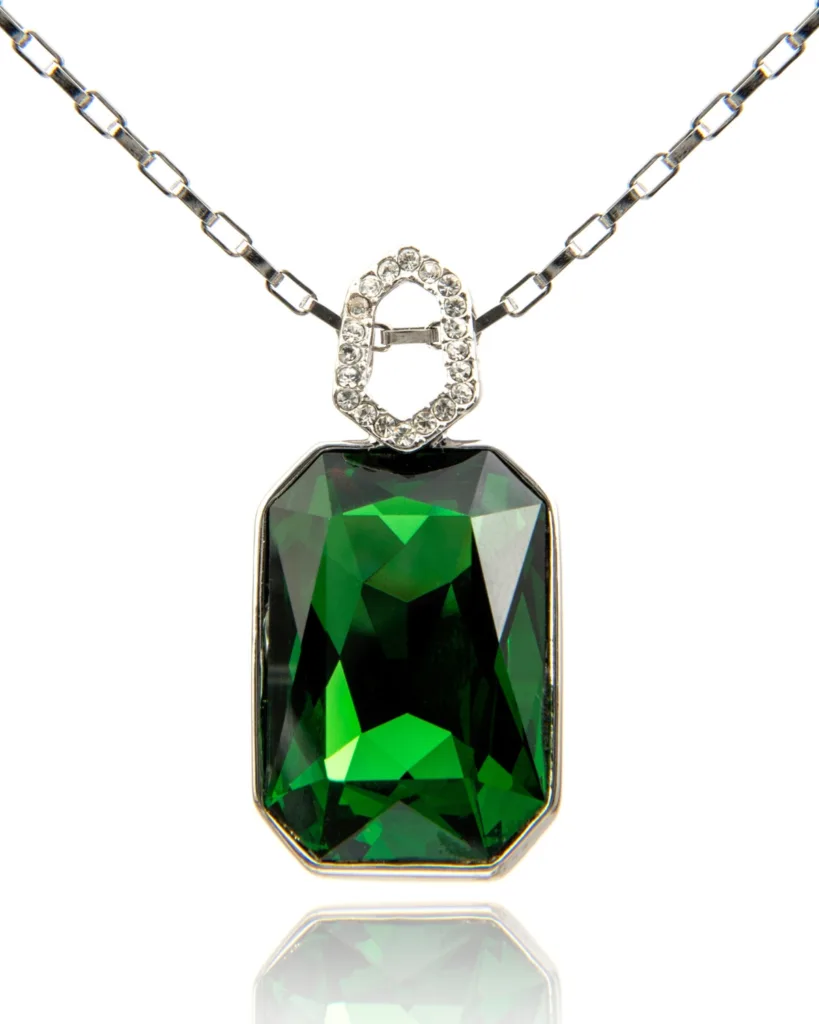Emerald Gemstone Meaning – Emerald, the vibrant green gemstone, is known for its captivating beauty and rich symbolism. Throughout history, emeralds have been cherished for their unique properties and have been regarded as a symbol of love, rebirth, and prosperity. In this article, we will explore the meaning and properties associated with emerald gemstones.

Emerald Gemstone Meaning
Emeralds have been revered for centuries for their mesmerizing green color, which is believed to represent life, growth, and renewal. The name “emerald” is derived from the Greek word “smaragdos,” meaning “green gem.” This gemstone is often associated with the lushness of nature and is believed to bring a sense of harmony and balance to its wearer.
Throughout various cultures, emeralds have been considered a symbol of love and fertility. In ancient Rome, emerald was associated with the goddess Venus, the goddess of love and beauty. It was believed that wearing an emerald would enhance one’s ability to attract love and strengthen existing relationships.
Properties of Emerald Gemstone
Emeralds belong to the beryl family of gemstones and are known for their stunning green color, which ranges from light green to deep, intense hues. The green color of emerald is caused by the presence of chromium and vanadium in its crystal structure.
One of the most desirable features of emerald is its clarity. Unlike many gemstones, inclusions are often accepted in emeralds, as they are considered part of the gem’s character and can be used to authenticate its natural origin. However, emeralds with fewer inclusions and a higher clarity are considered more valuable.
Emeralds are also known for their durability, with a hardness of 7.5 to 8 on the Mohs scale. However, due to their natural inclusions, emeralds are more prone to breakage and require careful handling and maintenance.
Symbolism and Uses of Emerald Gemstone
Emeralds have long been associated with various symbolic meanings and have been used for different purposes throughout history. Here are some of the symbolism and uses of emerald gemstones:

Love and Relationships:
Emeralds are often regarded as a symbol of love and commitment. They are believed to strengthen relationships and promote loyalty and fidelity. Emeralds are also considered an ideal gift for couples celebrating their 20th or 35th wedding anniversary.
Healing and Well-being:
In ancient times, emeralds were believed to possess healing properties and were used to treat various ailments. They were thought to soothe the eyes, alleviate stress, and promote overall well-being. Today, emeralds are still associated with healing and are often used in alternative therapies.
Prosperity and Abundance:
Emeralds have long been associated with wealth and abundance. They are believed to attract prosperity and success, making them a popular choice for those seeking financial stability and growth.
Spiritual Growth:
Emeralds are often used in spiritual practices to enhance intuition and spiritual awareness. They are believed to open the heart chakra and promote spiritual growth and transformation.
Caring for Emerald Gemstone
To ensure the longevity and beauty of your emerald gemstone, it is important to take proper care of it. Here are some tips for caring for your emerald:
- Avoid exposing your emerald to harsh chemicals or extreme temperatures.
- Store your emerald jewelry separately to prevent scratches.
- Clean your emerald gently using warm, soapy water and a soft brush.
- Have your emerald jewelry professionally inspected and cleaned regularly.
By following these care tips, you can preserve the beauty and value of your emerald gemstone for years to come.
The History of the Emerald Gemstone
The emerald gemstone is known for its captivating green color and has a rich history that spans centuries. This precious gemstone has been treasured by various civilizations and cultures throughout time.

One of the earliest known records of emerald mining dates back to ancient Egypt, where the gemstone was highly prized by pharaohs and royalty. Cleopatra, the last active ruler of the Ptolemaic Kingdom of Egypt, was particularly fond of emeralds and often adorned herself with jewelry featuring these stunning gemstones.
In ancient Rome, emeralds were associated with the goddess Venus and were believed to have the power to enhance fertility and protect against evil spirits. The Roman emperor Nero reportedly used emerald lenses to watch gladiator fights, as he believed it would soothe his eyes and provide visual clarity.
During the Middle Ages, emeralds were considered a symbol of rebirth and were believed to have healing properties. It was believed that wearing an emerald could cure various ailments and provide the wearer with increased intelligence and foresight.
The Spanish conquistadors discovered vast emerald deposits in South America during the 16th century. The legendary Muzo mines in present-day Colombia became renowned for producing some of the finest emeralds in the world.
Today, emeralds continue to be highly sought after and are often used in fine jewelry. The vibrant green color of emeralds symbolizes growth, renewal, and prosperity. It is also the birthstone for the month of May.
From ancient civilizations to modern times, the emerald gemstone has captivated people with its beauty and symbolism. Its rich history and allure make it a timeless gemstone that continues to be cherished and admired.
Final Thoughts
Emerald gemstones hold a special place in the world of gemology and have captivated people with their stunning green color and rich symbolism for centuries. Whether you are drawn to emeralds for their aesthetic beauty or their spiritual significance, wearing an emerald can bring a sense of harmony, love, and prosperity into your life. By understanding the meaning and properties of emerald gemstones, you can appreciate their unique qualities and make a meaningful connection with these exquisite gems.
Read about the meaning of Amazonite Gemstone.
Disclaimer: All metaphysical, benefit information or healing properties stated in this article are collected from various sources. This information is provided as a guide and is not meant or intended to treat or to be used for any medical conditions. Gemma Rayne does not guarantee the validity of the information and statements made herein.





